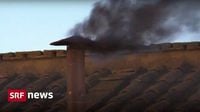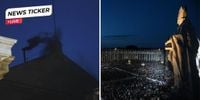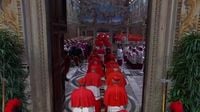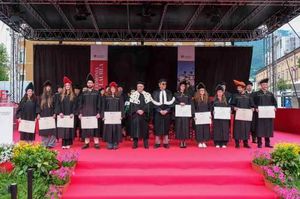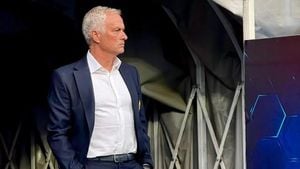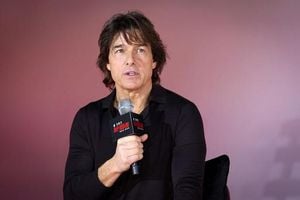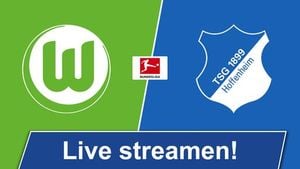On May 7, 2025, the Vatican witnessed a momentous occasion as 133 cardinals from around the globe gathered in the iconic Sistine Chapel to elect a new pope following the death of Pope Francis. The conclave officially commenced at 5:46 PM local time, marked by the closing of the chapel doors and the command "extra omnes," which ordered all unauthorized individuals to leave the room. This solemn event was steeped in history and ritual, set against the backdrop of Michelangelo's breathtaking frescoes that have adorned the chapel for centuries.
The day began with a mass at St. Peter's Basilica at 10:00 AM, where cardinals participated in the traditional service known as "Pro eligendo Romano Pontefice"—"For the Election of the Roman Pontiff." This ceremony, led by Giovanni Battista Re, the dean of the College of Cardinals, set a reflective tone for the day ahead. Following the mass, the cardinals, robed in their ceremonial vestments, made their way to the Sistine Chapel, where they would be sealed off from the outside world to deliberate and vote on the next leader of the Catholic Church.
As the cardinals entered the chapel around 4:45 PM, they were greeted by the sight of Michelangelo's renowned artwork, which serves as a constant reminder of the gravity of their task. The chapel has been the site of papal elections since the 17th century, and its murals symbolize the spiritual weight of the decisions being made within its walls. The cardinals took an oath of secrecy, promising to adhere to the election protocols and maintain confidentiality throughout the process.
However, the first round of voting did not yield the anticipated results. At approximately 9:05 PM, black smoke billowed from the chimney atop the Sistine Chapel, signaling that no consensus had been reached among the cardinals. This outcome was met with disappointment by the tens of thousands of faithful gathered in St. Peter's Square, who had anxiously awaited the smoke signal as a sign of the election's progress. The black smoke indicated that none of the candidates had achieved the necessary two-thirds majority, which amounts to at least 89 votes in favor of a candidate.
In the hours leading up to the conclave, speculation about potential successors to Pope Francis had intensified. Names such as Pietro Parolin, the Vatican's Secretary of State, Matteo Zuppi, the Archbishop of Bologna, and Pierbattista Pizzaballa, the Patriarch of Jerusalem, surfaced as frontrunners. The diversity of the cardinal electors, with representatives from various continents, suggested a potentially prolonged election process, as the two-thirds majority required for election could be harder to achieve given the wide array of candidates.
Notably, three German cardinals—Gerhard Ludwig Müller, Reinhard Marx, and Rainer Maria Woelki—were among those participating in the conclave. Cardinal Müller, in anticipation of a lengthy deliberation, had packed for "five, six days," indicating the uncertainty surrounding the election timeline. Many observers noted that the atmosphere was charged with both hope and tension as the cardinals prepared to engage in their sacred duty.
Former German Chancellor Angela Merkel expressed her desire for a new pope who would be "close to the people," reflecting a sentiment shared by many who hoped for a compassionate and approachable leader in the wake of Pope Francis's passing. The late pontiff had been known for his progressive views and emphasis on social justice, leaving behind a legacy that many hoped his successor would continue.
As the evening wore on and the first round of voting concluded without a new pope being elected, the cardinals retreated to the nearby Santa Marta guesthouse. This facility, which has limited accommodations, faced a unique challenge due to the large number of voting cardinals. The guesthouse has only 128 rooms, and with 133 cardinals needing lodging, some were required to stay in a neighboring building.
The conclave's schedule is traditionally rigorous, with multiple rounds of voting planned each day until a new pope is elected. If a consensus is not reached, the cardinals will continue to vote, with the possibility of two ballots in the morning and two in the afternoon. The process is steeped in tradition, and the anticipation builds as each round concludes with the iconic smoke signals from the chapel's chimney.
As the world watches, the significance of the conclave extends beyond the immediate election of a new pope. It represents a pivotal moment for the Catholic Church, which faces numerous challenges in a rapidly changing world. The new pope will be tasked with addressing issues such as secularism, social justice, and the church's role in global affairs, all while navigating the complexities of a diverse and often divided congregation of over 1.4 billion Catholics worldwide.
The Sistine Chapel, with its historical and artistic significance, serves as an apt setting for such a momentous decision. The chapel was renovated in the late 15th century under Pope Sixtus IV, and its name is derived from him. The artwork within, including Michelangelo's Last Judgment, serves as a constant reminder of the moral and spiritual responsibilities that come with the papacy.
As the conclave unfolds, the eyes of the world remain fixed on the Vatican, waiting for the moment when white smoke will rise from the chimney, signaling the election of the 267th pope in the history of the Catholic Church. Until then, the cardinals are committed to their solemn duty, guided by faith and tradition as they seek to choose a leader who will navigate the church through the complexities of the modern world.
